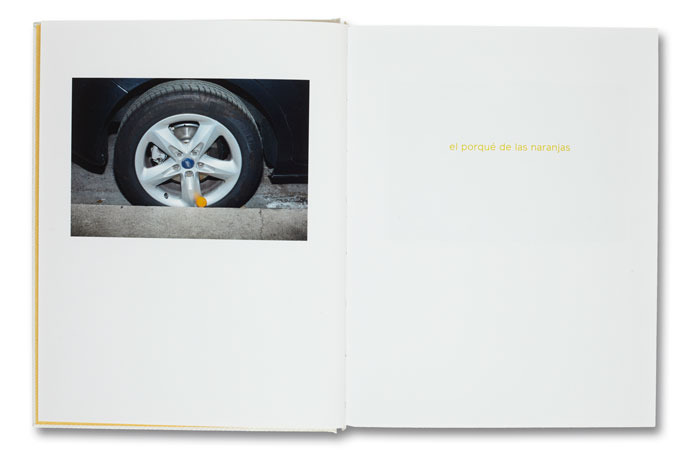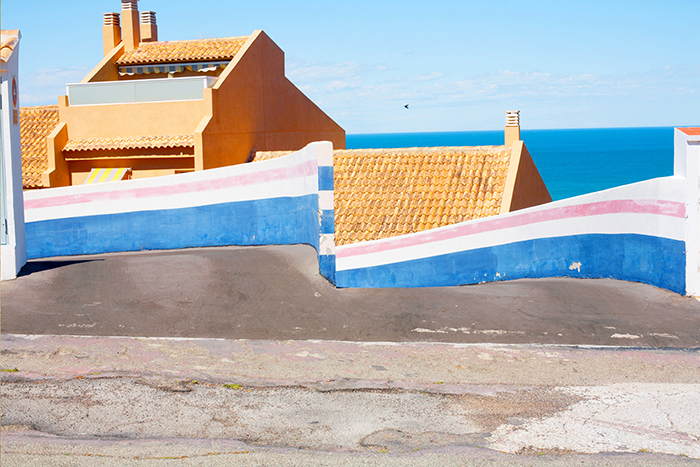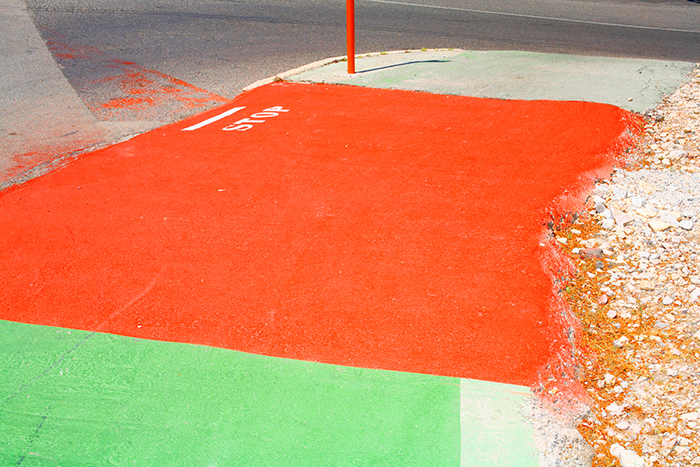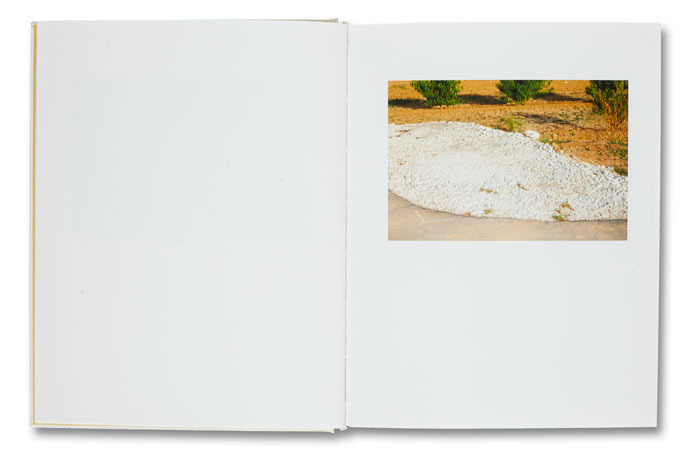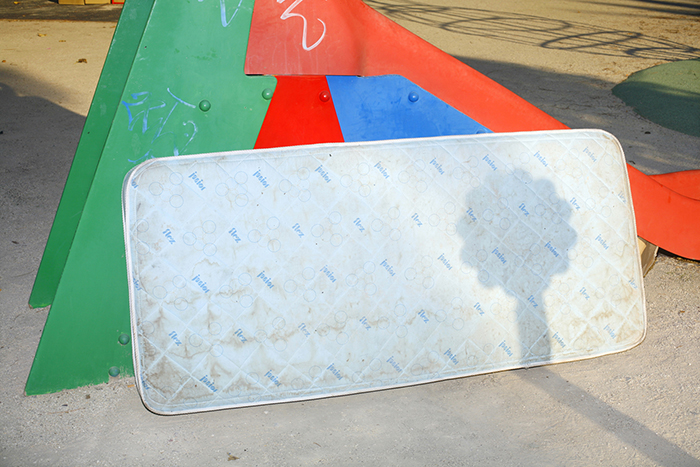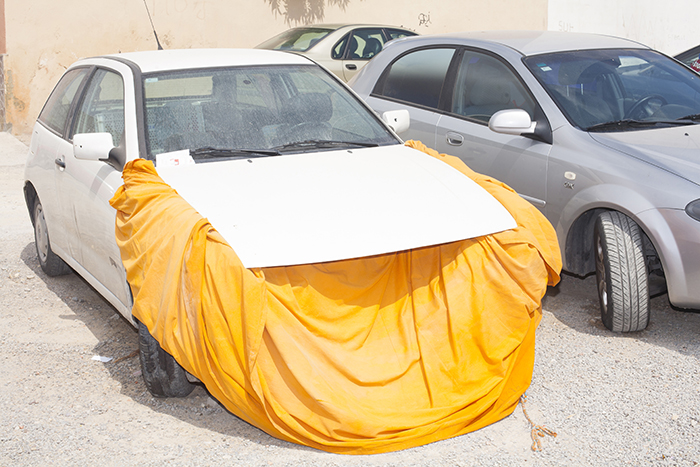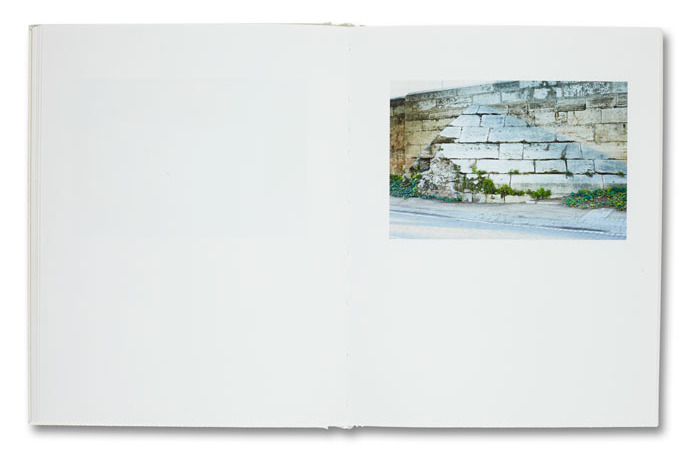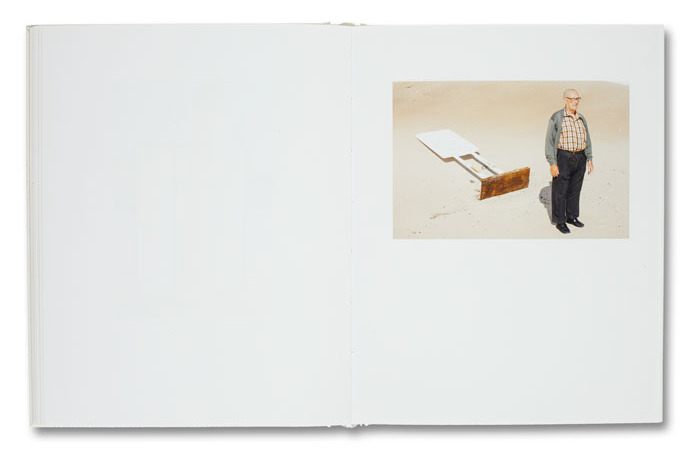Ricardo Cases – El Porqué de las Naranjas
Artist: Ricardo Cases
Title: El Porqué de las Naranjas
Publisher: MACK
Year: 2014
El Porqué de las Naranjas begins with a rhetorical question. Why oranges? More like a nonsensical taunt than a proper title. Why this? Why that? Why not? Composed of various snapshots taken around the region of Levante in Spain, Ricardo Cases’ new book offers an absurdist look at the Mediterranean landscape of a Spanish tourist town. More loosely structured than his critically acclaimed book Paloma del Aire, El Porqué de las Naranjas is shot with the inquisitive and roving eye of a paparazzi. Caught in the glare of Cases’ flash and the hot Mediterranean sun, reality has a startled look. Each orange and haphazard structure appears caught in the act of doing or hiding something. If Cases’ book leads with a question, each following image is a subsequent question and challenge. Why oranges? Why a garishly painted sidewalk? An overturned mattress? Or a pile of boxes? Yet, if each image asks a slightly different question, they share the same answer. That answer may be unclear, but it’s important to ask.
Shot almost entirely in the Levante region of Spain, Cases offers a portrait of a vacation resort in the aftermath of financial collapse. Beneath the hot colors and glaring sun, the slipshod constructions and misplaced objects seem embarrassed and unsure of their place in the world. Oranges appear periodically and are a visual thread throughout the book. The roll up against tired, clog storm drains, and appear painted on a wall. The symbol of that region, the orange is not merely a visual device tying the work together, but also suggests deeper meanings about the evolution and identity of the place. If the orange is one symbol of the place, Cases asks us why and teases apart the visual tropes of the region—the blue sky, the painted sidewalk, the murals, the palm trees, the halted or improvised construction etc. These all appear in images, but are revealed as part of the façade precariously held together and maintained, but more often than not rubbing up against more unsavory elements like tire rims or gutters.
Shot with a flash and under the penetrating Mediterranean sun, Cases work has a flat bleached quality that is at first alarming. Cases use of light imparts the work a penetrating and unrelenting presence. No shadow is left unexplored and there is nowhere to hide. The work not only recalls the luminous California photography of Henry Wessel and the flash-blasted work of Martin Parr, but also the Spanish photographer Carlos Perez Siquier, whose series on beach goers from the 70s Cases cites as an influence. Like Siquier, Cases is drawn to the bright pastels of the Mediterranean, but relies less on dramatic cropping and unusual vantage points than discovering absurdist juxtapositions in the world. Small and brick like, the book is neatly designed and lets each small image rest comfortably on a white page. Unlike the cacophonous spiral-bound Paloma del Aire, whose very design dramatized the frenetically colored work, El Porqué de las Naranjas builds slowly and allows the images to breath.
Although projects define the parameters for a certain activity, those guidelines are never hard and fast. Instead they set the stage and let the actor play. The challenge in creating a project is to provide enough room to play, to breath. Created in the wake of a personal tragedy, in Cases life, the death of his mother and close friend, the work and its starting point, the question “why oranges,” became a framework for Cases to approach the odd landscape of Valencia and the surrounding region. Like most good projects, the subject itself falls away and is merely a space where Cases’ sensibility can emerge. Playful and inquisitive, the observational moments Cases reveals are slow to coalesce, but provide ample visual delight. Digging deeper, Cases’ work offers a portrait of a region held together with tenacity and unintended humor despite the lingering effects of the economic downturn. At the same time, it leaves open the titular question. In the end, there aren’t any real answers, just more questions. One after the next…Why? Why Why?


